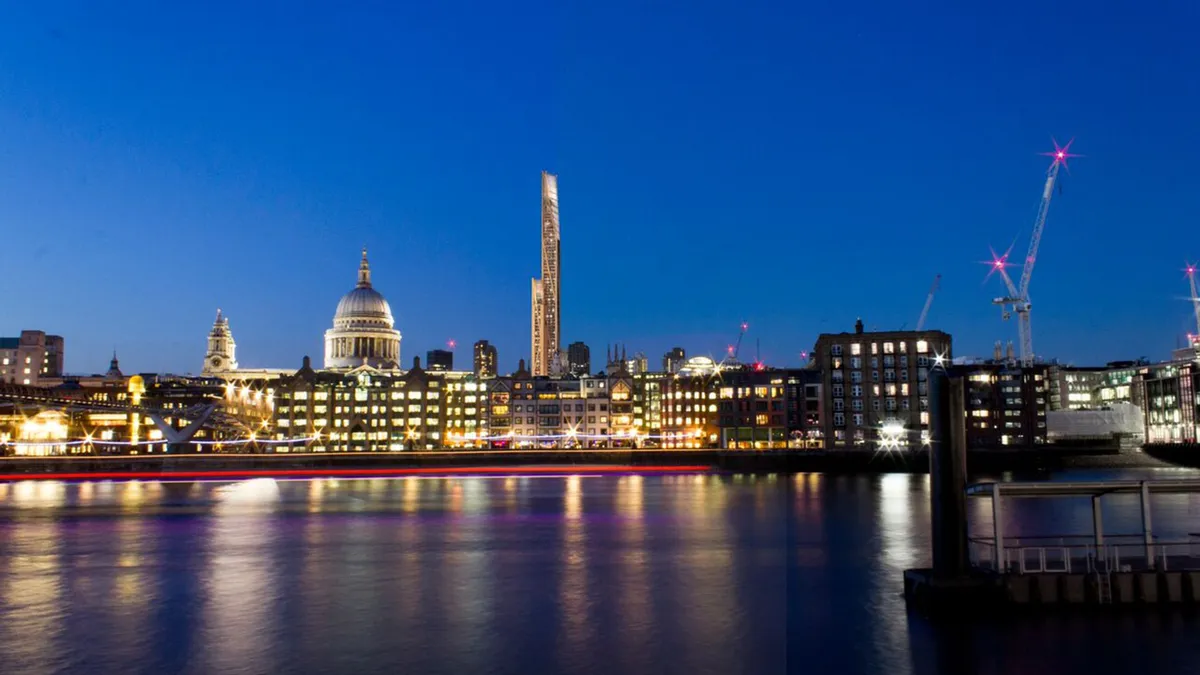Dive Brief:
- The historic Barbican housing estate in London could soon see the addition of a 984-foot-tall wooden skyscraper, according to Dezeen.
- London-based PLP Architecture and a team from the University of Cambridge have designed and engineered the 1-million-square-foot structure with 1,000 residential units to meet all standard fire regulations.
- If the 80-story tower is approved and built, it would be London’s second tallest building and the world’s tallest wooden tower. Architects and researchers submitted their proposal to London Mayor Boris Johnson.
Dive Insight:
Cross-laminated timber (CLT) is quickly gaining a reputation as a feasible substitute for glass and concrete because, according to the American Wood Council, CLT is renewable, sustainable and reduces a building’s carbon footprint. According to the proposal from PLP and the University of Cambridge, CLT panels also cost less, shrink construction schedules and reduce a building’s weight, Wired reported.
Although wooden high-rises are new to London, the "plyscraper" trend is already picking up steam in other countries. Currently, the tallest wooden structure is a 14-story apartment building in Norway.
Overcoming building codes and fire codes, as well as public perception of the safety of working or living in wood high-rises, still remains a challenges for developers looking to construct these plyscrapers.
In September, the U.S. Department of Agriculture announced the winners of its U.S. Tall Wood Building Competition, co-sponsored by the Softwood Lumber Board and the Binational Softwood Lumber Council. The winning teams from Portland, OR, and New York City were each awarded $1.5 million to develop their wood building designs. According to the USDA, the increased use of wood products for nonresidential applications, now at only a 5%-15% share, could provide hundreds of thousands of jobs in rural communities serving the U.S. wood industry.











